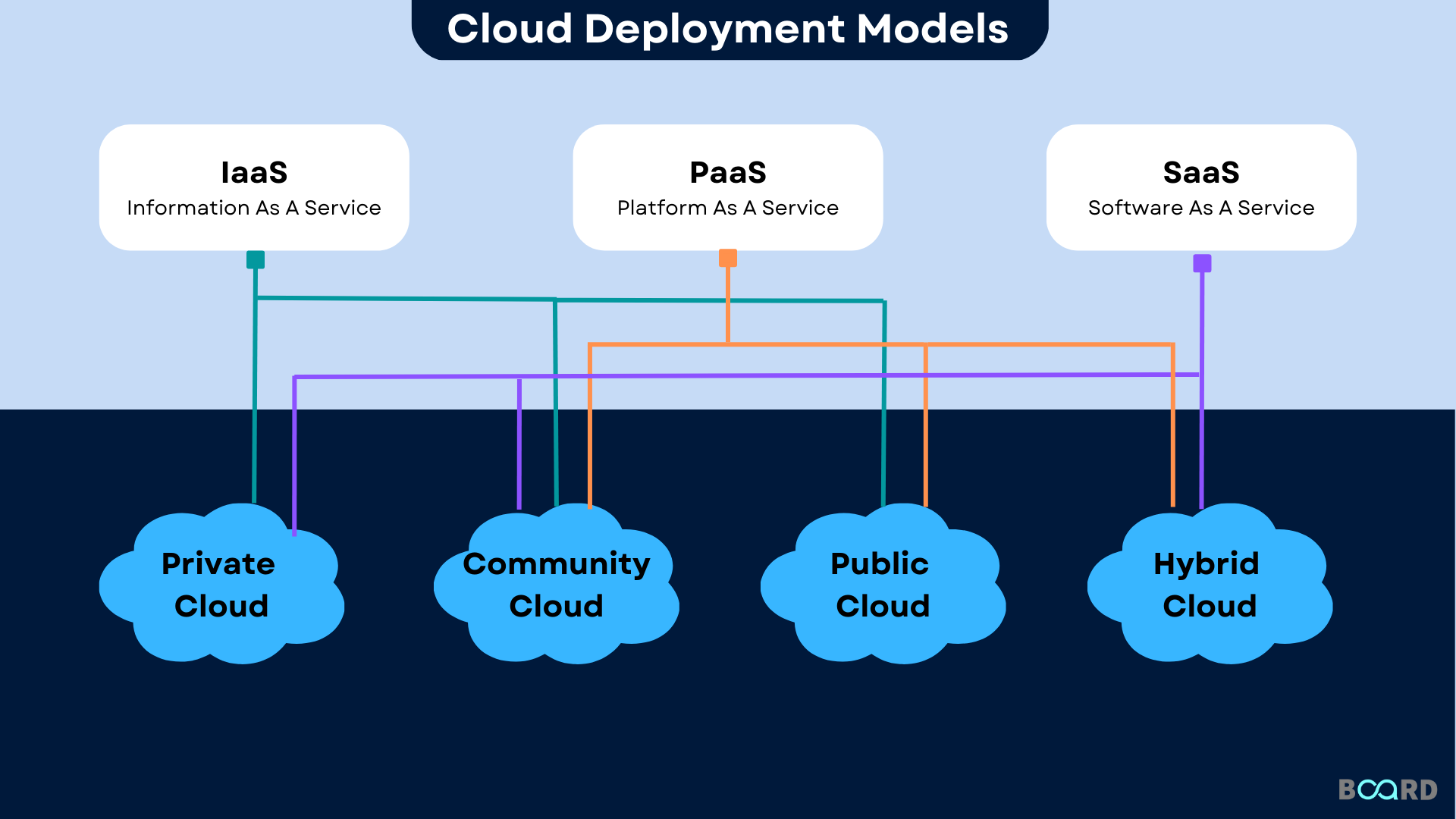Cloud Computing Fundamentals: Introduction and Core Principles
5 Cloud Deployment Models: Detailed Explanation

Introduction
There are several types to choose from when it comes to cloud installations. The location of each workload in your cloud architecture will be determined by your business needs. Each cloud deployment strategy has benefits and drawbacks. Consequently, it is crucial to understand each deployment approach in great detail. In this post, we take a close look at the various cloud deployment strategies as well as several scenarios when we may use them.
What is Cloud Deployment?
A great strategy to improve your grasp of the cloud is to prepare for and obtain cloud certifications. The four models we'll be examining are public, private, community, and hybrid clouds. These include things like your computing power, data storage, and networking bandwidth. We'll examine the deployment modes mentioned above as well as important information that you should be aware of.
Public Cloud Deployments
Public servers that are accessible over the internet or through a VPN provider host public cloud installations.Every piece of gear, including networking equipment and VM hosts, is the responsibility of the service's owner. For businesses that do not want to make significant hardware and software investments, this makes operating an IT infrastructure far less burdensome. Popular public cloud systems also simplify the provisioning of services.
Benefits
simple to control! The beautiful thing about using a managed service is that there isn't much maintenance work for you and your team to undertake. You don't pay for things that you don't use because of how services are invoiced. Your business will suffer if your systems are offline. Several of these cloud service providers provide outstanding uptime and accessibility.
Disadvantages
The systems that house your company's applications are not under your control. As would be the situation in a conventional server room or data center environment, you do not have access to maintain continuity in the improbable event that a public cloud platform fails. security and privacy. Simple surroundings.
Private Cloud Deployments
A business may decide to host its cloud infrastructure on-site or in a data center. In both scenarios, the business typically controls the infrastructure. The company's own workforce creates and maintains the technologies that function on a private cloud. Only authorized users are able to access the resources of the private cloud due to rigorous access controls.
Benefits
You will have more control since fewer individuals will have access to the administration and configuration of the infrastructure that supports your private cloud. You can develop and deploy new features internally if there is a financial justification for them, giving you more alternatives than a publicly accessible cloud. To safeguard your cloud, you are free to use as many security services as you choose. When used in conjunction with security best practices like strong passwords and frequent password changes, two-factor authentication is far more safe.
Disadvantages
You need the appropriate technical abilities to benefit from being able to customize your private cloud. Cost. The majority of businesses, save the biggest ones in the world, can afford to build their own private cloud infrastructure. The expenditures of maintaining a competent workforce and other infrastructural expenses are also included.
Community Cloud Deployments
A community cloud is basically a multi-tenant hosting platform that usually involves similar industries and complementary businesses. Community cloud deployments enable its users to save money by providing the infrastructure across several businesses. With the exception of locations where shared access has been decided upon and set up, data is still compartmentalized and kept private.
Benefits
As we mentioned before, the biggest advantage of employing this system is the cost savings. This is due to the fact that everyone who uses the community cloud will share the expenses in order to provide an egalitarian service. The safety of the renters. The community cloud concept is extremely safe if everyone adheres to the same standards and the security rules are coordinated. Having everyone on the same platform and working for the same objectives increases the chances of collaboration when there is a common aim.
Disadvantages
A set of standards must be decided upon by a community cloud, which must then coordinate among itself. This implies that in order to implement the policies, each stakeholder must have access to their own technological resources. It is challenging to maintain segmentation and security. Rarity. There aren't many resources or well-known examples available for people to learn from because this model isn't yet widely used.
Hybrid Cloud
Similar to one another, cloud solutions incorporate several elements to meet a company's needs. One illustration would be a hybrid cloud that combines the affordability and simplicity of public clouds with the safety of private clouds. Private clouds may be used to store sensitive data while public clouds can be used for user services.
Benefits
Flexibility: This cloud type's flexibility is one of its finest qualities. The greatest features of each cloud type may be chosen and incorporated into your solution.
Scalability: You are not constrained by any platform's restrictions. This implies that you may grow your business to meet consumer demand.
Disadvantages
You run the risk of overspending if you are employing a hybrid cloud. None of the other cloud types we have examined are intrinsically more costly than hybrid clouds. But if you are not attentive about picking the correct services, there is undoubtedly a chance of overspending. silos of data. You must ensure that all of your data has been correctly divided if you combine public and private services. As a result, your company may need to implement more stringent security, compliance, and auditing measures.
Conclusion
It might be difficult to pick the best cloud deployment approach. If you want to create the best solution for your needs, you must take a variety of different factors into account. There are several options available to anybody wishing to develop a cloud solution that matches their needs. Cloud-hosting service and product providers and suppliers are multiplying on a consistent basis.
